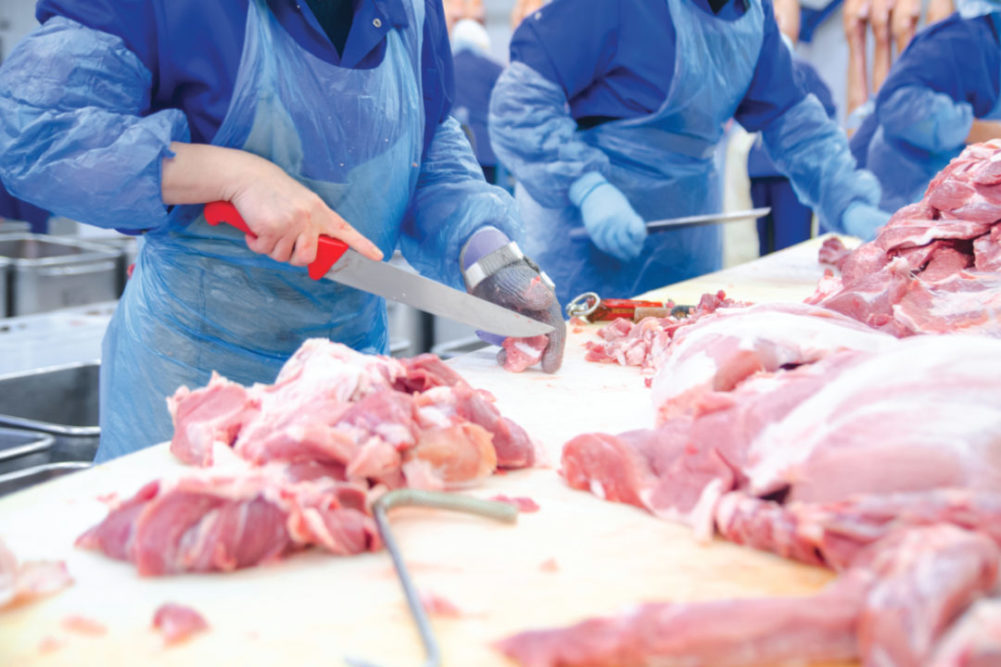WASHINGTON – To combat consolidation in the US meat processing industry, the Biden administration has pledged to invest approximately $1 billion to expand independent meat processing capacity in the United States. The money to be used will come from the American Rescue Plan that was signed into law in March 2021.
The US Department of Agriculture (USDA) will provide financing grants up to $375 million in two phases as part of the program. Phase I will invest approximately $150 million for an estimated 15 projects that are considered to have the greatest near-term impact. The USDA will deploy an additional $225 million to support additional projects in phase II, which will take place in summer 2022.
Additionally, the USDA will work with lenders to make more capital available to independent processors that need credit. Up to $275 million will be deployed as part of the program. The Biden administration also said it will support private lenders that invest in independently owned food processing and distribution infrastructure like processing equipment and cold storage.
The entire virtual meeting can be watched below:
Tune in as I meet with both independent and family farmers and ranchers to discuss our work to boost competition and reduce prices in the meat-processing industry. https://t.co/q6A9h2Adl0
— President Biden (@POTUS) January 3, 2022
Other initiatives the administration said will bolster independent meat processing capacity will include creating job opportunities in rural communities; investing an estimated $50 million in technical assistance and research and development to help independent business owners, entrepreneurs, producers, and other groups, such as cooperatives and worker associations, create new capacity or expand existing capacity; and provide $100 million in reduced overtime inspection costs to help small and very small processing plants keep up with demand. With bipartisan support in Congress, the USDA is reducing the financial burden of overtime and holiday inspection fees for small and very small poultry, meat, and egg processing plants, according to the administration.
This past July, President Biden signed an executive order to promote competition in the agriculture, labor, health care and technology sectors. Specifically related to agriculture, the proportion of dollars spent on food reaching farmers and ranchers has been falling for decades, according to the order.
“For example, four large meat-packing companies dominate over 80% of the beef market, and, over the last five years, farmers’ share of the price of beef has dropped by more than a quarter — from 51.5% to 37.3% — while the price of beef has risen,” the Biden administration said.
The order directed the USDA to develop a plan to “increase opportunities for farmers to access markets and receive a fair return, including supporting alternative food distribution systems like farmers markets and developing standards and labels so that consumers can choose to buy products that treat farmers fairly.”
The agency also was tasked with making it easier for farmers to “bring and win claims” under the Packers and Stockyards Act, related to how farmers are paid to protect them from retaliation when famers “speak out about bad practices.”
The USDA and the US Department of Justice said on Jan. 3 they will jointly develop within 30 days a centralized process for farmers, ranchers, and other producers and growers to submit complaints about potential violations of the antitrust laws and the Packers and Stockyards Act. The agencies will work together to promote information sharing and case cooperation, including processes the agencies will follow to efficiently address a complaint.
“Over the past 10 months, we have stepped up our efforts to ensure competition and counter anticompetitive practices across sectors — from airlines to insurance brokers to book publishers,” said US Attorney General Merrick Garland. “And we will continue to vigorously enforce our antitrust laws, no matter the industry, no matter the company, and no matter the individual.”
The North American Meat Institute (NAMI) pushed back on the administration’s claims concentration is responsible for the prices producers receive and consumers pay for meat. The National Chicken Council (NCC) also opposed the plans for more involvement in the meat and poultry industries by the government.
“Prices reflect supply and demand in a healthy market,” the Institute said.
What’s driven higher prices for consumers have been labor shortages in plants due to the impact of the COVID-19 pandemic, according to NAMI. Likewise, the prices producers have received is due to a backlog of meat producing animals that built up during the pandemic.
“The administration wants the American people to believe that the meat and poultry industry is unique and not experiencing the same problems causing inflation across the economy, like increased input costs, increased energy costs, labor shortages and transportation challenges,” said Julie Anna Potts, president and chief executive officer of NAMI. “Consumers know better.
“As economists predicted, producers are seeing higher prices for their cattle because packers have processed the backlog of animals in the system.”
The NCC also urged a different government response.
“While we haven’t seen any proposals for the chicken industry, this looks like a solution in search of a problem,” said Mike Brown, NCC president.
He encouraged the Biden administration to use the chicken industry’s business model for other industry sectors, as it represents the least-consolidated industry in animal agriculture, with a waiting list of potential producers willing to partner with processors.
“It’s time for The White House to stop playing chicken with our food system and stop using the meat industry as a scapegoat for the significant challenges facing our economy,” Brown said.
“This administration should be looking at the chicken industry as a model of success, instead of creating a boogeyman to justify an unnecessary and expensive foray into our meat supply,” he said.


